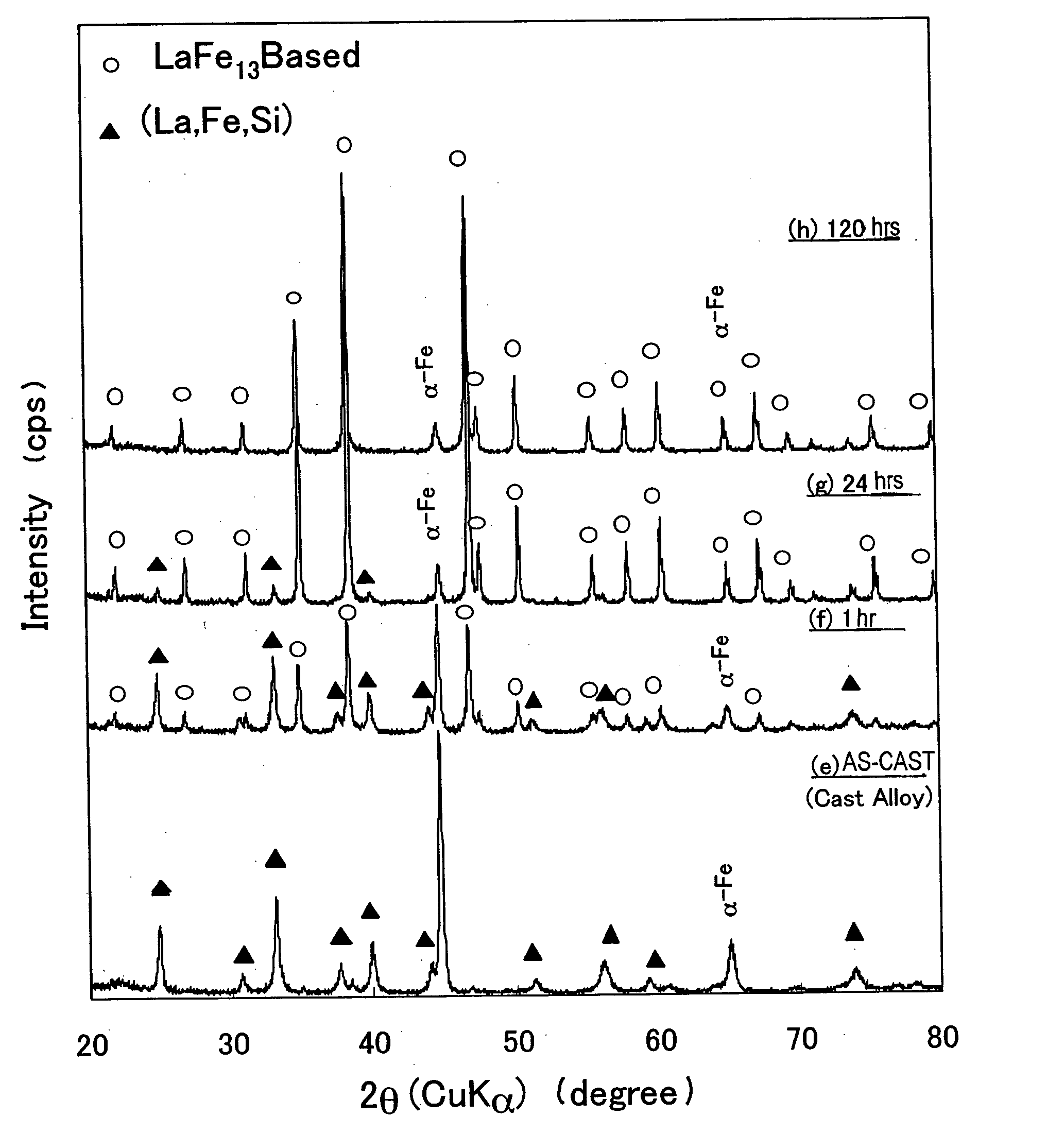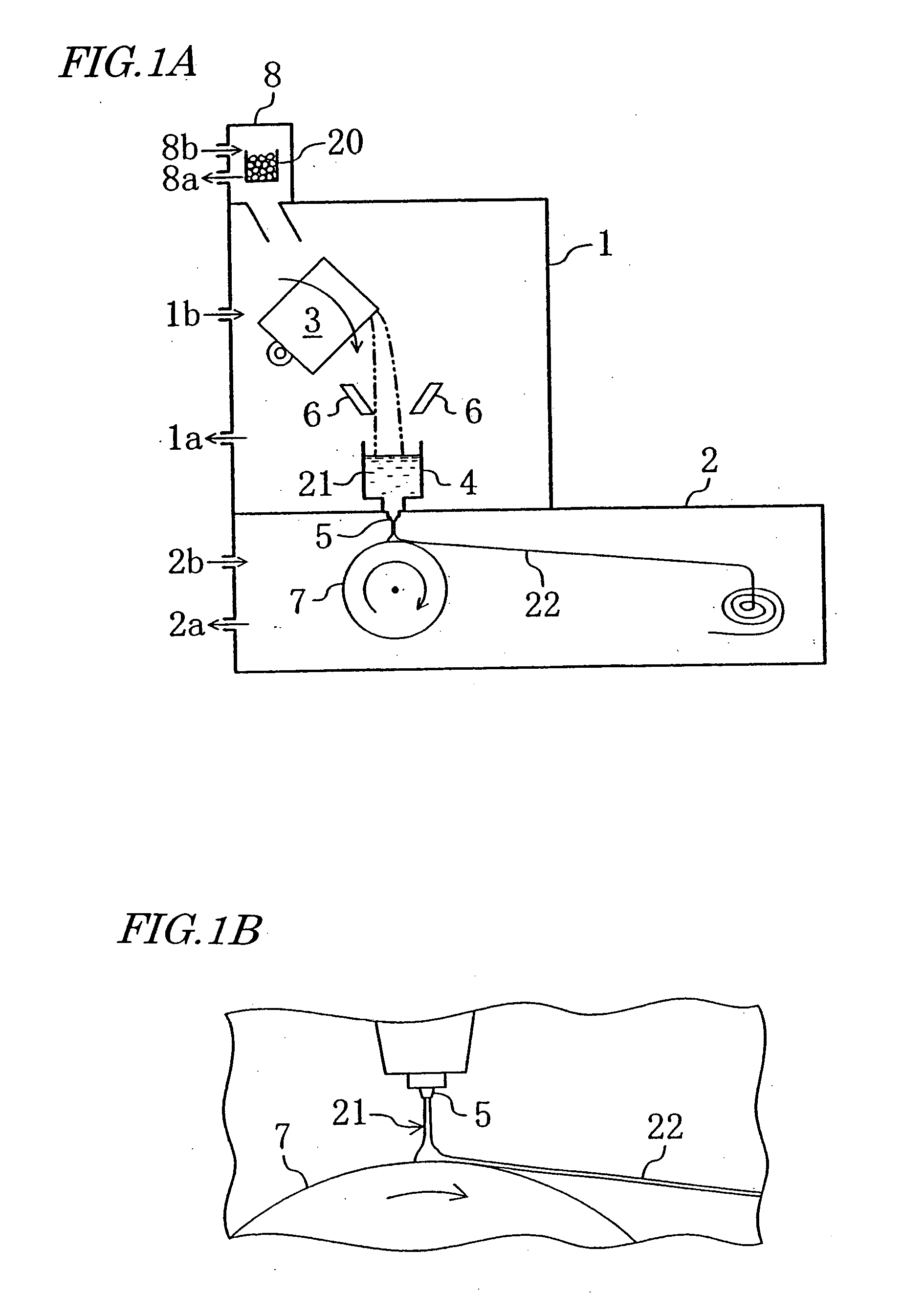Magnetic alloy material and method of making the magnetic alloy material
a magnetic alloy and alloy material technology, applied in the field of magnetic alloy materials, can solve the problems of insufficient mass production of based magnetic alloys, deterioration of magnetocaloric effects, and inability to pulverize ingot cast alloys
- Summary
- Abstract
- Description
- Claims
- Application Information
AI Technical Summary
Problems solved by technology
Method used
Image
Examples
experimental example no.2
EXPERIMENTAL EXAMPLE NO. 2
[0090] [Making Samples]
[0091] As in Experimental Example No. 1 described above, respective materials La, Fe and Si in predetermined amounts were mixed together such that an LaFe.sub.13-type compound phase having a composition La(Fe.sub.0.88Si.sub.0.12).sub.13 could be obtained. Then, the mixture was melted in a high frequency melting crucible, thereby obtaining a cast alloy. Thereafter, a melt of about 10 g of the resultant ingot cast alloy was ejected through a quartz nozzle with a diameter of about 0.8 mm onto a Cu roller that was rotating at a velocity of about 20 m / s, thereby obtaining an alloy ribbon as Sample (i).
[0092] Subsequently, Sample (i) was thermally treated at about 1,050.degree. C. within an Ar atmosphere for approximately 1 minute, approximately 5 minutes, approximately 10 minutes, approximately 30 minutes and approximately 60 minutes. The alloy ribbons obtained in this manner will be referred to herein as "Samples (j), (k), (l), (m) and (n...
PUM
| Property | Measurement | Unit |
|---|---|---|
| Temperature | aaaaa | aaaaa |
| Temperature | aaaaa | aaaaa |
| Temperature | aaaaa | aaaaa |
Abstract
Description
Claims
Application Information
 Login to View More
Login to View More - Generate Ideas
- Intellectual Property
- Life Sciences
- Materials
- Tech Scout
- Unparalleled Data Quality
- Higher Quality Content
- 60% Fewer Hallucinations
Browse by: Latest US Patents, China's latest patents, Technical Efficacy Thesaurus, Application Domain, Technology Topic, Popular Technical Reports.
© 2025 PatSnap. All rights reserved.Legal|Privacy policy|Modern Slavery Act Transparency Statement|Sitemap|About US| Contact US: help@patsnap.com



